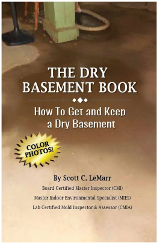Health Effects of Mold
Can mold make my family and I sick?
Mold grows everywhere, both indoors and outdoors. Most often mold found indoors comes from outdoor sources. Outdoor mold spores travel indoors through windows, cracks, crevices or are carried inside on shoes and clothing. It is very common to find mold spores in the air of homes and growing on damp surfaces.
We are all exposed to mold on a daily basis without evident harm. However, health problems arise when mold spores enter our bodies in large numbers. For some people a relatively small amount of mold spores can cause health problems, and yet for others it may take a considerably greater amount. The following are three ways mold spores can enter the human body:
Inhalation: Breathing in airborne mold spores.
Skin: Touching moldy surfaces such as furniture or coming in contact with plants that may have molds. Worse yet, is if you may have an open wound or abrasion that mold can penetrate into your body.
Ingestion: Eating toxic fungal species on spoiled food, including nuts, grain, rice and agricultural products.
What symptoms might I see?
The most common health problems caused by indoor mold are allergy like symptoms. Although other and more serious problems can occur, people exposed to mold commonly report problems such as:
- Abdominal pain
- Abnormal pap smears
- Acid reflux / indigestion
- Acne
- Allergies and anaphylaxis [severe allergic reaction]
- Altered immunity
- Asthma and asthmatic signs [sudden onset asthma,increased asthma attacks, wheezing, shortness of breath, coughing, burning in lungs]
- Balance problems
- Bladder and kidney pain
- Bleeding lungs
- Blood pressure irregularities
- Body aches and muscle pains
- Breathing difficulties [tightness in chest, shortness of breath]
- Bruising easily
- Burning in mouth, throat and lungs similar to acid reflux
- Cancer
- Central nervous system effects
- Chills
- Choking
- Cholesterol or triglycerides irregularities
- Chronic fatigue (chronic, excessive or continued and/or general malaise
- Chronic sinus infections
- Coated tongue
- Colds, recurring and with decreased resistance to infections
- Constipation
- Dandruff problems (chronic) that won't go away despite use of anti-dandruff shampoos
- Dark urine
- Death in extreme cases
- Depression/anxiety/dementia
- Dermatitis and skin rashes
- Diarrhea
- Difficulty concentrating
- Difficulty in swallowing
- Dirt-like taste in mouth
- Dizziness
- Dry, hacking cough or coughing up blood [resulting to sore lungs/chest due to excessive coughing]
- Early menopause
- Eye and vision problems
- Eye irritation (burning, watery, or reddened eyes)
- Face flushing intermittently
- fFacial movements inadvertently or extreme jerking
- Feeling lost or disconnected from what's happening around you
- Feelings of hopelessness
- Fevers
- Fibromyalgia [chronic fatigue and widespread pain]
- Food allergies
- Frequent bloody noses
- Frequent infections
- Hair loss
- Headaches/migraines
- Heart attack
- Hemorrhagic or hypersensitivity pneumonitis [extrinsic allergic alveolitis, or farmers' lung disease]
- Hypersensitivity to mold
- Indigestion [heartburn /acid reflux ]
- Infertility
- Irritability, mood swings, spleen pain or sudden personality changes
- Irritable bowel syndrome
- Itching of the nose, mouth, eyes, throat, skin or any area
- Kidney pain and failure
- Large boils on neck
- Leaky gut syndrome
- Liver pain
- Long lasting flu-like symptoms
- Memory loss or learning difficulties [brain fog, confusion, Alzheimer's-like symptoms]
- Metallic taste in mouth
- Multiple chemical sensitivity
- Night sweats and hot flashes
- Nose or throat irritation
- Nosebleeds
- Numbness in face and limbs
- Open skin sores and lacerations
- Open sores on head
- Organic dust toxic syndrome
- Peripheral nervous system effects
- Physical weakness
- Poor appetite
- Puffy or droopy eyes
- Rashes or hives
- Redness of the sclera (white portion of your eyes)
- Respiratory distress
- Ringing in ears
- Runny nose (rhinitis), clear, thin, watery mucus from your nose may appear suddenly, or thick, green slime coming out of nose (from sinus cavities)
- Seizures
- Sensitivity to smells / odors
- Sinus congestion, sinus problems, chronic sinusitis and other nasal problems
- Skin rashes or irritation
- Skin redness
- Sleep disorders
- Slurred speech or verbal dysfunction (trouble in speaking)
- Sneezing fits (more than three sneezes in a row, happening often)
- Spitting up mucous
- Swollen glands
- Swollen lymph nodes
- Systemic candida infection
- Tremors (shaking)
- Unexplained fevers
- Urinary tract infection (uti)
- Vertigo or dizziness
- Vomiting (nausea)
- Women's health problems [such as endometriosis and vaginal yeast infections].
Are the risks greater for some people?
There is wide variability in how different people are affected by indoor mold. However, the long term presence of indoor mold growth may eventually become unhealthy for anyone. The following types of people may be affected more severely and sooner than others:
Infants and children, Elderly people, Individuals with respiratory conditions or sensitivities such as allergies and asthma
Persons having weakened immune systems (for example, people with HIV infection, chemotherapy patients, organ transplant recipients, or even a cold or flue)
Those with special health concerns should consult a medical professional if they feel their health is affected by indoor mold.
Are some types of mold more harmful?
Many fungi produce toxic metabolites called mycotoxins. Dramatic and carcinogenic effects have been recorded for animals and humans exposed to high levels of mycotoxins in laboratory studies. Symptoms of exposure to mycotoxins may include cold and flu-like symptoms, headache, nosebleeds, dermatitis and immune suppression. Many mycotoxins are highly disease causing.





